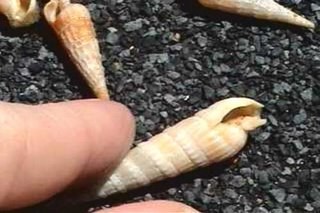
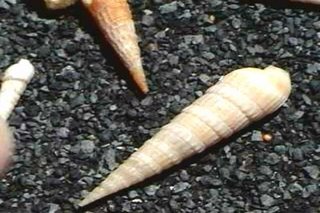
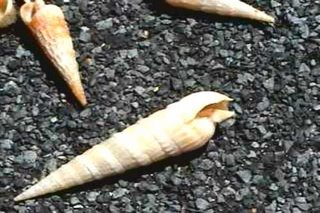
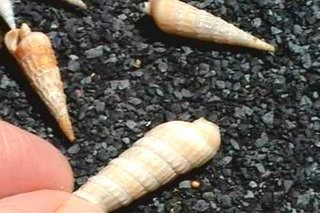

This shell seemingly (according to two sources) Usbourne Spotter's SHELLS and The Shell Book, Atlantic, Gulf and Carribean belong among Fusinus and Augers.
Two species are shown which best match, the species which is listed as common to North Carolina would be the Common Atlantic Auger, scientific name Terebra dislocata, measuring between 1.5 to 2", and found between Virginia to Florida, and the West Indies.
Auger-Shaped (Terebridae)
Eastern Auger Terebra dislocata (Say)
Description: (2 1/4 inches) Long, pointed spire. Whorls not concave. Prominent spiral cord at top of each whorl that winds around 20 to 25 low axial ribs. Smaller spiral cords between axial ribs. Canal at bottom of aperture. Thin operculum.
Color: Varied exterior with bands of pale gray, pinkish brown or orange-brown. Tan operculum.
Habitat: Lives in sounds and offshore on shallow sand flats. Common on sound and ocean beaches.
Range: Virginia to Brazil.
Notes: Also called a common American auger or Atlantic auger. A carnivore, it lacks the radula and poison gland found in most other augers. Hatched young crawl away.
Source: Seashells of North Carolina, North Carolina Sea Grant College Program



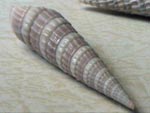

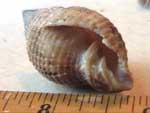





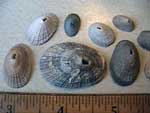

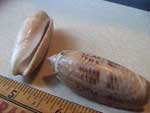
No comments:
Post a Comment